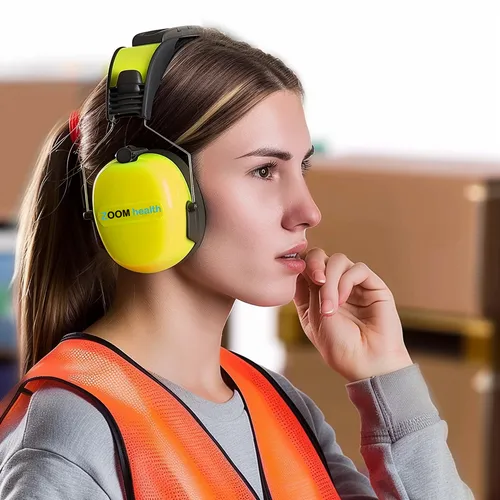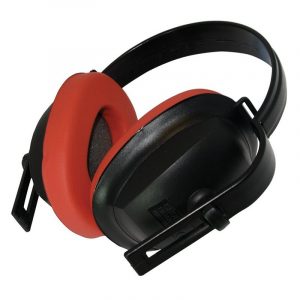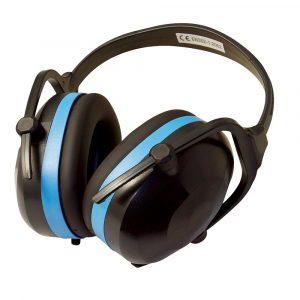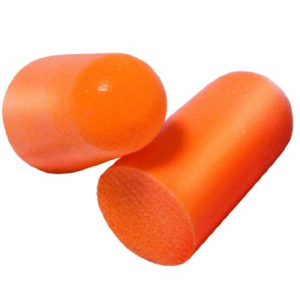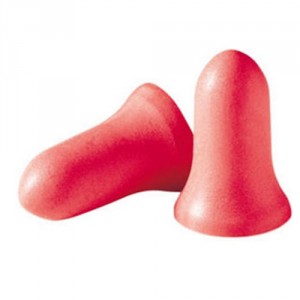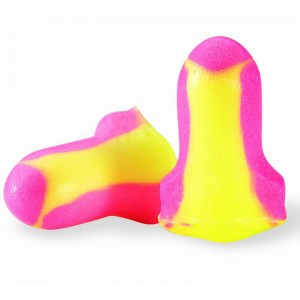Is ear protection required where you work? Should you wear ear defenders or earplugs? You will have to decide which one is better for you. They each have their own advantages and disadvantages and to make the right decision you need to know what kind of hearing protection each offers. Keep reading to find out all you need to know about the differences between ear defenders and ear plugs.
Ear Defenders Advantages
The biggest advantage of ear defenders is how easy they are to fit. You just put them on over your ears and you are good to go, no special fit required. As a result, they are perfect for intermittent use like when doing landscaping or construction work. You can also get ear defenders for kids, which can help to protect young ears at loud events. You can even get ear defenders for babies!
Since ear defenders are an easy fit they offer consistent and reliable usage. Because of this, the user will be getting the proper protection that the ear defenders offer. This means that the worker will be getting the proper protection in areas where they cannot use ear plugs. Children are also more likely to want to wear these type of ear defenders than they are earplugs, as they are less intrusive on the ear.
Ear defenders are usually more comfortable to wear in cooler environments, especially if they have to be worn for extended periods. When it comes to warmer environments ear plugs might be a better option as they are more comfortable. Ear defenders tend to get warm and humid in warmer environments.
Ear Defenders Disadvantages
Although ear defenders provide an easier fit, they don’t provide as much protection compared to earplugs. They only cover the ear and do not provide protection to the ear canal. Ear defenders become very uncomfortable and hot and humid environments. They can also be bulky and uncomfortable to wear and can be quite intrusive, making it difficult to hear conversations or to communicate with the people around you. Additionally, the noise-blocking effect of ear defenders or ear muffs tends to be less effective for higher frequencies, meaning that certain sounds may still be audible.
Ear muffs can lose their effectiveness after they are worn over other forms of PPE such as safety glasses. In comparison, earplugs provide a more discreet option and reduce the volume of sound reaching your ears rather than blocking it. This means that you can still hear your surroundings, allowing you to listen in on conversations and communicate with those around you. Furthermore, because earplugs only reduce sound, rather than blocking it out completely, they tend to be more effective at blocking higher frequencies.
Earplugs Advantages
Earplugs offer a higher form of protection compared to ear muffs. Since they’re small and fit directly into the air canal, they offer more protection compared to ear muffs. When your ears require the highest form of protection, earplugs are the better option, particularly in areas where the user is exposed to loud noises like factories, foundries, airports etc.
Earplugs are lighter and more portable. Due to their small size, the user is able to carry them in cases that easily fit in pockets. Earmuffs are more cumbersome and not as portable compared to ear plugs.
If you have to wear other kinds of PPE such as helmets or safety glasses, ear plugs are the better option because they easily fit into the ear canal. Some of the best loved and most reliable earplugs are manufactured by brands such as Mack’s, Moldex and Howard Leight.
Earplugs Disadvantages
A major drawback of earplugs is that they are difficult to fit sometimes. In order for them to provide proper protection, they have to fit snugly into the ear canal. Once employees get the proper training on how to fit earplugs the correct way then they will provide the listed protection for the user.
If the user has any kind of ear infection, it is almost impossible for them to wear ear plugs. In such cases, ear plugs might not be a better option since it will become very uncomfortable for the user.
If you decide to go with earmuffs or earplugs, you need to consider how much noise reduction protection is provided. The dB protection rating will tell you how much noise reduction is provided. You need to know how much noise reduction is required in your working environment. When you know the kind of protection you require, take a look at the wide selection of ear defenders and earplugs.
Choosing the Right Hearing Protection
Choosing between earplugs and earmuffs ultimately comes down to your specific needs and working environment. However, there are a few key factors to consider:
- Noise Level: For extremely loud noise levels above 105 decibels, earplugs generally provide better protection than earmuffs. They seal the ear canal more effectively against high-decibel sounds.
- Fit and Comfort: Earplugs require a tighter fit in the ear canal for maximum effectiveness. This can cause discomfort over long periods for some wearers. Earmuffs may be more comfortable for extended wear, but their bulkier design can interfere with other headgear.
- Cost: Disposable foam earplugs are usually the most cost-effective option, especially for temporary or intermittent noise exposure. Reusable earplugs and quality earmuffs involve a higher initial investment.
- Communication Needs: While both earplugs and muffs reduce ambient noise, earplugs allow better hearing of voices and sounds around you. This can be beneficial if you need to communicate frequently on the job.
The ideal solution may involve using earplugs and earmuffs together for maximum protection against dangerously high decibel levels. Many workers employ this dual protection method in extremely loud environments.
Tips for Proper Use
Whichever type of hearing protection you choose, proper usage is crucial for ensuring adequate safety:
- For earplugs, follow the roll, pull, and hold insertion method to create an ideal seal in the ear canal.
- With earmuffs, adjust the headband tension for a snug but comfortable fit over both ears.
- Inspect equipment regularly for wear and replace when needed.
- Use hearing protection any time you are exposed to noise levels over 85 decibels for extended periods.
Protecting your hearing now can prevent permanent damage and issues like tinnitus later in life. A little care goes a long way for long-term ear health.
Photo “Ear Defenders” by Anthony Cunningham for Zoom Health
Zoom Health is a leading UK supplier of Home Health Tests and Earplugs

